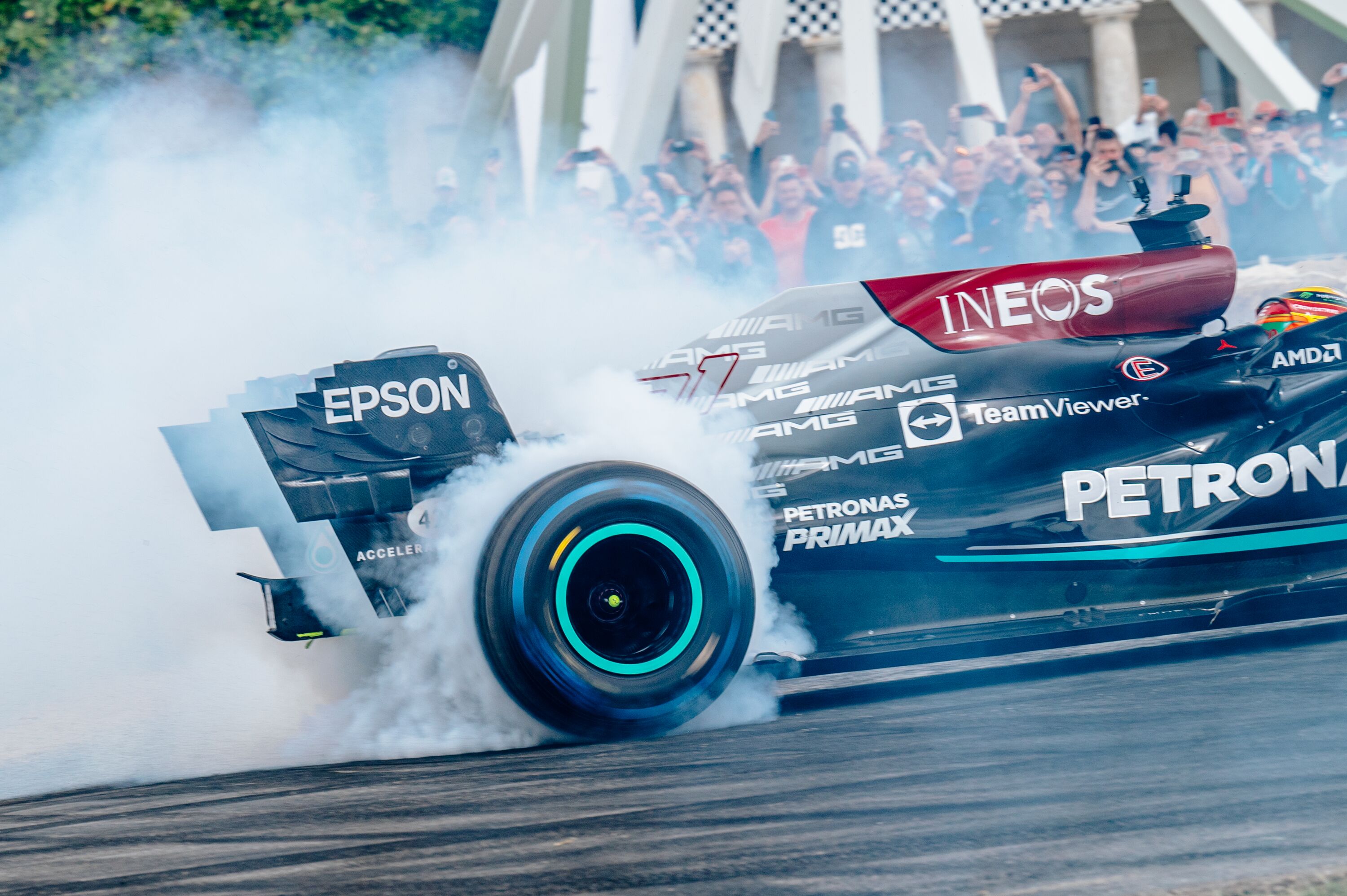Ferrari’s first 120-degree V6 | Thank Frankel it’s Friday
 Andrew Frankel
Andrew Frankel
Much noise has been made about the engine of the new Ferrari 296 GTB, which is quite understandable given it appears to set a new specific output record even before its hybrid power is adopted. Interesting too that it is claimed to be unrelated to the new 3.0-litre V6 ‘Nettuno’ engine used in the Maserati MC20 and, indeed the V8 motor used in the 488 GTB and F8 Tributo. What could a 3.0-litre 120-degree V6 have in common with a 4.0-litre, 90-degree V8? The same capacity per cylinder, bore and stroke, that’s all.

But today I want to dwell a little more not on the 296 GTB itself, but its engine configuration and where it came from, specifically that 120-degree vee angle, so different to the 60-degree angle we’re used to seeing in almost all other V6 engines.
Almost but not all. Actually and over the years V6s have been made with a dizzying number of angles. There were the extreme narrow angles of between 10.5 and 15 degrees, such as those used by the Volkswagen VR6 models and, indeed, each half of the Bentley W12 motor to this day. Ferrari itself used a 65-degree bank angle (with offset crankpins to create even firing intervals) on its early Dino race engines and all V6 Dino road cars. There have been plenty of 90-degree V6s because these engines started life as V8s and had a couple of pots lopped off, while 72-, 75- and even 80-degree motors have been used in various esoteric motors. Many would doubtless argue too that the Porsche 911 had a 180 degree V6 too.
The 120 degree V6 has not been popular however, at least in road cars. But suddenly they are in vogue for it’s not just Ferrari that’s done one for its new generation mid-engined supercar, but McLaren and Aston Martin too, though the latter’s has now sadly been cancelled. So why now?

Well a 120-degree V6 has a lot going for it: because opposing cylinders can share crank pins resulting in an engine that is shorter, stiffer and lighter. The bank angle means it’s lower too, helping reduce the centre of gravity. Today the distance between the two banks also makes it easy to place the turbos between them, creating a so-called ‘hot vee’ which is great for response and emissions.
So why are all V6s not made this way? Partly because the configuration has primary imbalance which needs removing by way of balancer shafts, but mainly because its width makes it impractical for use in a front-engined car, because it would interfere with suspension design and steering lock. It’s not been used in mid-engined road cars before, because these have tended to be exotic creatures requiring eight, ten or twelve cylinders. But in these downsized days a V6 is now seen as the right way to go and in a mid-engined car, all impediments for a properly balanced 120-degree V6 are removed. Which is why three all turned up at once.
For Ferrari however, this was far from its first 120-degree V6. Indeed the advantages of the configuration have been known to it for very many years. Sixty of them to be precise.
It’s 1960 and, not before time, Enzo is finally getting around to accepting that front-engined Formula 1 cars have had their day. He creates a rough mid-engined prototype using the same 65-degree 2.5-litre V6 used in his front-engined machines and enters it into the Monaco Grand Prix where, with Wolfgang von Trips driving, it runs creditably enough without exactly setting the world ablaze in a field of already mid-engined Coopers and Lotus. And when the British boycott the Italian Grand Prix, the same car with a modified frame and 65-degree 1.5-litre engine is wheeled out as a test for the new formula that would be introduced in 1961. It wins its class with ease. The concept has been proven.
But when the V6 returns for 1961, it is now sporting a new 120 degree angle, its engineer Carlo Chiti well aware of all the advantages listed above. It revs higher than the 65-degree engine so gives more power too. Compared to the prosaic four-cylinder motors that power the entire rest of the grid until a couple of Climax V8 Coopers arrived toward the end of the season, it is in a class of one. Indeed there is only one reason the ‘Sharknose’ Ferrari 156s doesn’t have it all his own way that year and he is called Stirling Moss. At circuits that place a premium on handling above pure power, namely Monaco and Nürburgring, his almost superhuman talent make the difference. Everywhere else the Ferraris go that year, they win.

The only anomaly is the French Grand Prix where newcomer Giancarlo Baghetti in his first ever Grand Prix is entered in a 156 with the old 65-degree motor which he qualifies way down in 12th place, way behind Phil Hill, Richie Ginther and Wolfgang von Trips in their 120-degree cars. Astonishingly for such reliable machines they all retire, leaving Baghetti to win a slipstreaming battle with Dan Gurney’s Porsche by a breathless one tenth of a second. It is his very first World Championship race and he’s won it. Sadly however he’ll never win another.
By the end of the season and despite the tragedy at Monza where von Trips loses his life, Ferrari wins the Constructors’ Championship by 40 points to Lotus’ 32, which sounds much closer than it is, because only your best five scores count, so Ferrari drops 12 points for its second places in Monaco and Germany, Lotus none at all. The 120-degree V6 has totally dominated the top level of racing. Six decades later, it looks likely to be about to do the same all over again in road cars.
F1 images courtesy of Motorsport Images.
Ferrari
296 GTB
Formula 1
Thank Frankel it's Friday


































































